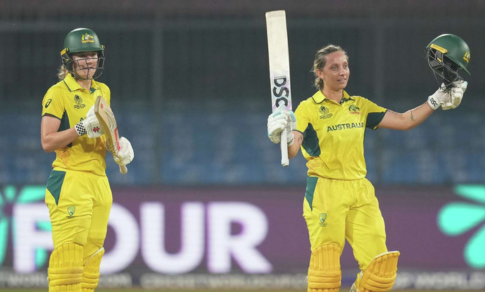Australia, England, and South Africa have already secured their places in the semifinals of the Women’s World Cup, leaving India and New Zealand.
At first glance, the Women’s World Cup group-stage standings may appear to reflect pre-tournament expectations, with the leading contenders living up to their reputations. However, beneath the surface, the tournament has delivered unexpected twists and moments of drama.
Host nation India entered as favourites but have struggled with nerves in crucial moments, suffering three narrow defeats — to Australia in a record run-chase, to South Africa, and by just four runs to England.
With Australia, England, and South Africa securing semifinal spots ahead of schedule, attention now turns to the crucial final group-stage showdown between India and New Zealand. The match, effectively a quarterfinal, will determine who claims the last semifinal berth and faces the winner of the upcoming clash between Australia and South Africa.
England began their campaign in dominant fashion, bowling out South Africa for just 69 runs and chasing down the target inside 15 overs. However, their early momentum soon faltered. While South Africa found their rhythm with five consecutive wins, England stumbled through close encounters — narrowly beating India and escaping with a washout against Pakistan after a poor batting display.
Australia remain the team to beat, boasting the tournament’s top run-scorer, captain Alyssa Healy, who has amassed 294 runs with two centuries, and the leading wicket-taker, Annabel Sutherland, with 15 wickets.
Yet it is South Africa who have displayed the greatest depth, with standout allrounders like Marizanne Kapp and Nadine de Klerk powering their success.
Laura Wolvaardt’s consistency, De Klerk’s explosive 84 against India, and contributions from Tazmin Brits, Sune Luus, and Chloe Tryon underline the team’s collective strength. Spinner Nonkululeko Mlaba has also been instrumental, taking 11 wickets to lead the bowling attack.
New Zealand remain potential spoilers for India’s campaign, despite their progress being hindered by two rain-affected games in Colombo.
The scheduling of multiple matches during Sri Lanka’s monsoon season has drawn criticism, adding to the unpredictability of the competition. As the group stage concludes, anticipation builds for next week’s semifinals on October 29 and 30, ahead of the grand finale on November 2.








ADD A COMMENT :